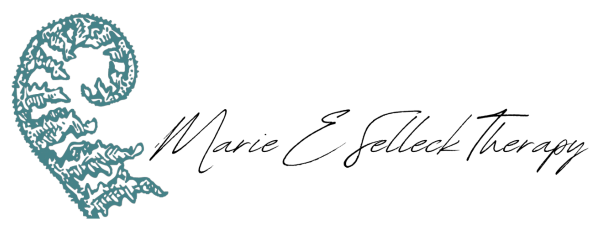How Do I Know Where Trauma Is Stored in My Body?
Your body remembers everything, even when your mind tries to forget. As a therapist, I see this truth play out in my office every day. Clients come in talking about anxiety, depression, or relationship issues. But their bodies are telling a different story – one written in tight shoulders, shallow breathing, and unexplained pain.
Trauma doesn't just live in your thoughts. It gets stored in your muscles, your nervous system, and your organs. This isn't just some new-age idea. Science backs this up. When something traumatic happens, your body goes into survival mode. It floods with stress hormones. Your muscles tense up. Your breathing changes. And sometimes, your body stays stuck in that state long after the danger has passed.
Listen to Your Body's Signals
Your body is constantly sending you messages about where trauma might be hiding. The key is learning to listen without judgment.
Chronic tension is often the first clue. Do you always carry stress in your shoulders? Does your jaw clench when you're anxious? These aren't random. Your body might be protecting areas that felt vulnerable during traumatic experiences.
Unexplained pain can also point to stored trauma. Maybe your lower back aches for no medical reason. Or you get headaches that doctors can't explain. Sometimes pain shows up in places that were hurt, threatened, or felt powerless during trauma.
Breathing patterns tell their own story. Trauma often lives in your chest and diaphragm. If you find yourself holding your breath or breathing shallow when stressed, your body might be guarding against old emotional pain.
Common Places Trauma Hides
While trauma can show up anywhere, certain body areas tend to hold specific types of emotional pain. The reason the following areas hold the most emotional pain is based on research on the Vagus nerve that goes from our brainstem to our pelvis, and plays a significant role in regulating emotions.
The throat and neck often store unexpressed emotions. If you couldn't speak up during trauma – whether as a child or adult – this area might feel tight or restricted. Chronic sore throats or feeling like you can't find your voice might be connected.
The chest and heart area hold deep emotional wounds. Betrayal, abandonment, and heartbreak often settle here. You might feel chest tightness, heart racing, or that familiar "heavy heart" feeling.
The stomach and gut are where we process life experiences. Ever heard of "gut feelings"? Your digestive system is deeply connected to your emotional state. Chronic digestive issues, especially when medical tests come back normal, might signal stored trauma.
The hips and pelvis often hold trauma related to power, control, and safety. Sexual trauma, boundary violations, or feeling powerless can get stored in this area. Hip tightness that never seems to go away might be your body's way of protecting itself.
**these body-location associations are based on somatic therapy theory and clinical practice rather than definitive research findings.
How to Start Exploring
Begin with gentle awareness, not aggressive digging. Trauma work requires patience and often professional support.
Body scanning is a simple place to start. Lie down comfortably and slowly notice each part of your body. Where do you feel tension? Where does your attention want to avoid? Don't try to fix anything yet. Just notice and be curious.
Movement and breathwork can help unlock stored trauma safely. Yoga, dance, or even gentle stretching might bring up emotions or memories. This is normal. Your body is releasing what it's been holding.
Professional support is crucial for deeper trauma work. Therapists trained in body-based approaches like EMDR, somatic therapy, or trauma-informed bodywork can guide you safely through this process.
Moving Forward with Compassion
Remember that your body stored trauma to protect you. It wasn't a mistake or weakness. Your nervous system did exactly what it needed to do to help you survive.
Healing stored trauma takes time. Some days you'll feel progress. Other days, old patterns might return. This isn't failure – it's part of the process. Your body learned these patterns over time, and it needs time to learn new ones.
Be patient with yourself. You're not broken. You're a person whose body has been carrying heavy burdens, and you're finally ready to set them down. That takes courage.
Ready to Take the Next Step?
If you're recognizing yourself in these patterns, professional support can make all the difference. Trauma therapy approaches like Brainspotting and somatic therapy are designed specifically to help your body release what it's been holding.
Brainspotting is particularly powerful for accessing stored trauma. This technique uses your visual field to locate "brainspots" – eye positions that connect to traumatic memories stored in your brain and body. It allows your nervous system to process and release trauma naturally, often reaching places that talk therapy alone can't touch.
You don't have to carry this alone anymore. Your body has been trying to tell you something important, and now you have the tools to listen and respond with compassion.
The path to healing isn't always comfortable, but it leads to freedom. Your body wants to release what it's been holding. Trust the process, seek support when you need it, and honor the wisdom your body has been trying to share with you all along.


